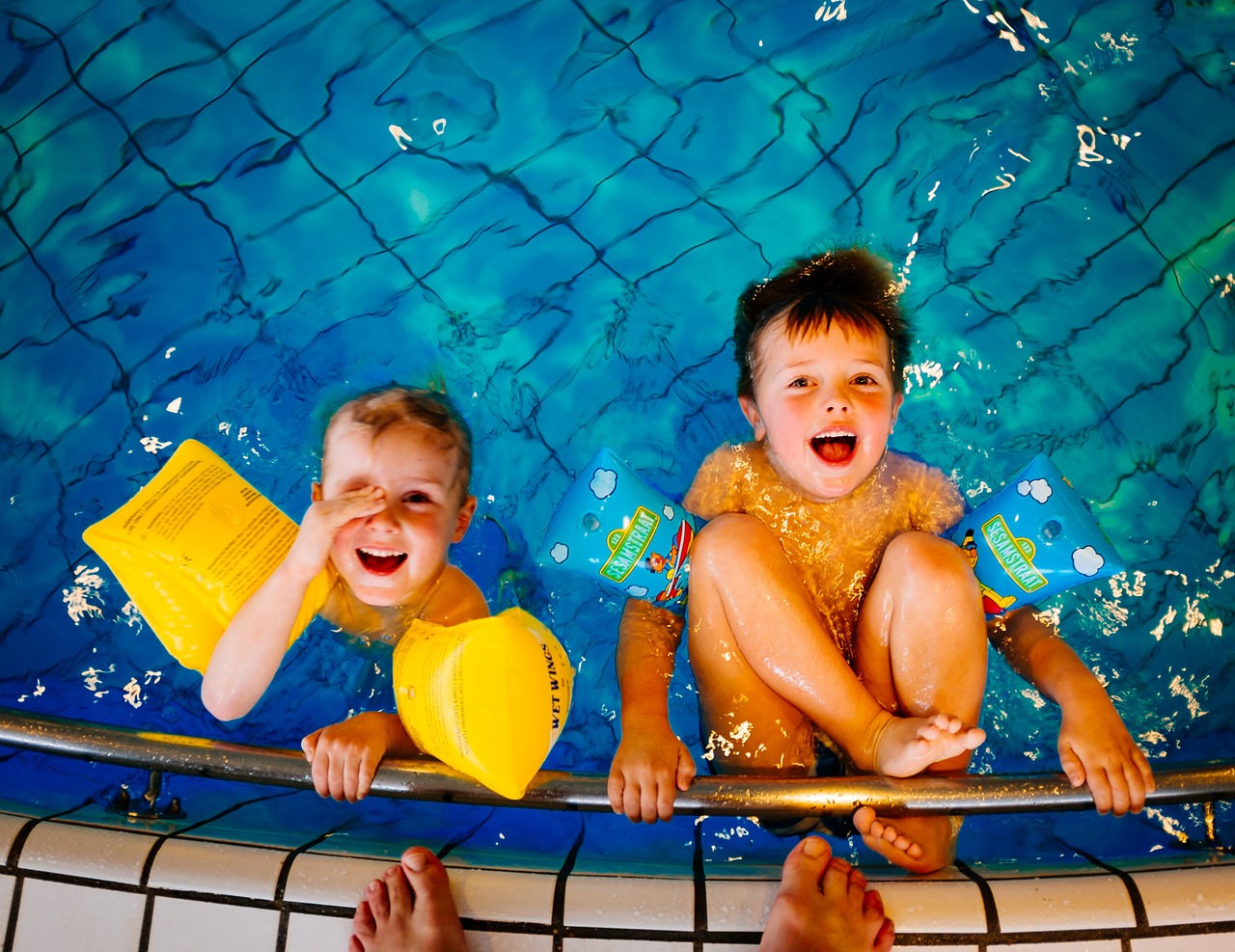Playing in the water is a favorite activity for kids especially in summers. A natural and astonishing fact is that a baby begins to swim, right from a mother’s womb! How early you can get your child learn swimming is purely a child-led phenomenon and the age at which every child gets ready for it, is unique. According to American Academy of Pediatrics formal swimming lessons for all children age 4 or older. Children exposed to swimming classes below this age are believed to be ‘developmentally unready’. Moreover, children aged below 3 are incapable of following instructions on how to swim and taking safety measures in a pool.
Below are the factors that, as parents, you must bear in mind while you contemplate exposing your child to lessons in swimming:
Ensure Your Child Loves Water
Knowing whether your child loves water is vital, before you introduce them to swimming. While some children love to be in water, others may not dislike it. However, some children are born with a fear of water called Aqua Phobia that may, in certain cases, call for medical intervention. Find your child’s affinity towards water.
Check for signs of “swimming readiness”
If your child is good at following directions, physically coordinated so he can kick and paddle at the same time, and emotionally ready (read: not afraid of the water), all swim signs point to go. In that case, look for a swimming-readiness program that’ll teach him the basic moves — how to float, for instance, and dog paddle. Look for small classes (fewer than six students) with instructors who are certified in CPR, first aid, and water safety.
Do Not Force or Set Goals
It is immaterial or rather damaging to force your child into swimming lessons, unless your child enjoys being in water. Doing this may lead to an aversion or a permanent fear that may postpone taking lessons on swimming, forever. It is, therefore, unwise for parents or coaches to set goals for children.
Introduce Steadily
There is no defined age to introduce your child to the swimming pool. Enjoying pool time as a family, with babies as early as 6 months of age and beginning with various aquatic programs might help your child learn to swim earlier than you think. Few parent-child orientation programmes are also great for your child to start with.
Myth and Fact of Introducing it Early
Enthusiastic and ambitious parents often believe that children who learn swimming earlier in age perform better than those who have learned to swim later. However, according to a study, children begin to perform accurate swimming moves between ages 5 and 6, irrespective of the age they began their training.
Disadvantage of Beginning it Early
The greatest disadvantage of beginning swimming lessons early is that, kids develop a false sense of security around water and so, are less cautious when in water. This leads to the predominant danger of drowning.
Quality of Water
Introducing babies and children to water may be a fun activity, but may, at times, prove detrimental. There are countless things to look for in terms of quality of water like – Highly chlorinated and treated pool water is harsh to the skin, very low or high temperatures are unsuitable. Water should be clean and free from pathogenic germs as babies tend to swallow the water. A warm water pool is ideal for young children.
Right Clothes
Clothes that are comfortable and avoid resistance in water, steal the limelight, while choosing the right clothes for swimming sessions. Comfortable clothes that don’t drag in water heighten the swimming experience while lessening the effort taken.
Don’t rely on floaties
As long as you’re in the water with your child and keep her within reach, water wings and inner tubes are fine. But never use these inflatable swimming aids as a substitute for approved life vests — they’re just not reliable or safe enough. And as soon as you’re done using the pool, make sure to remove all toys so children aren’t tempted to reach for them.
Take swimming & CPR classes
In addition to signing your child up for an age-appropriate swim class, it’s a good idea for you to take a child CPR class if you haven’t already. And it familiarize yourself with the signs of drowning in kids. More than likely you’ll never have to use this knowledge, but knowing what to look for can help save a life.
Benefits of Swimming as an Exercise
Swimming, by all means, is a great form of exercise and channelizes energy in children, especially the overactive ones. It leads to an increased appetite and also helps sleep better. It is particularly beneficial for asthmatic kids.

